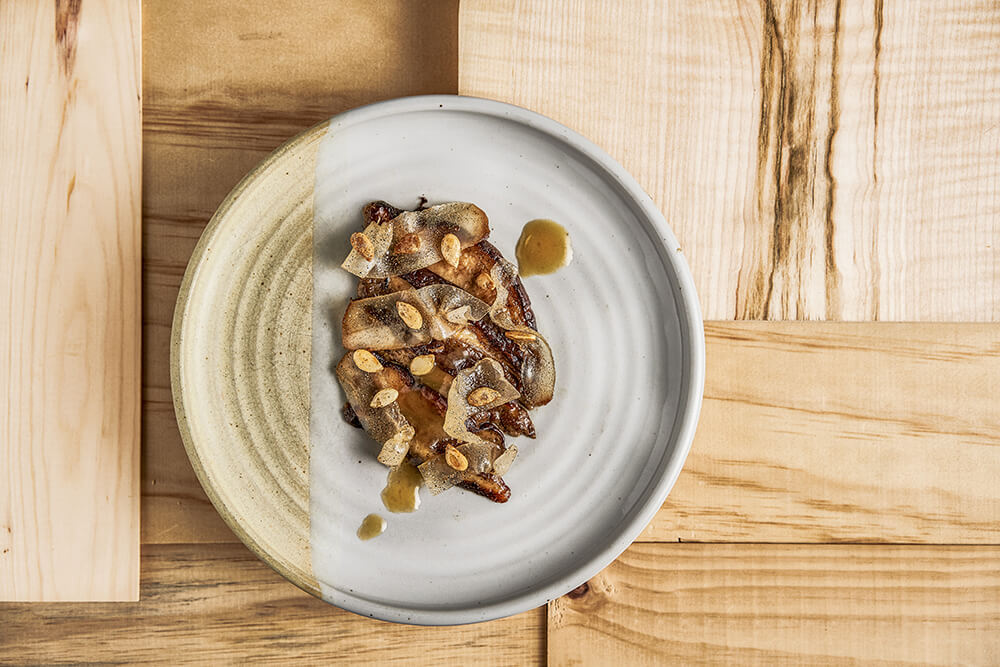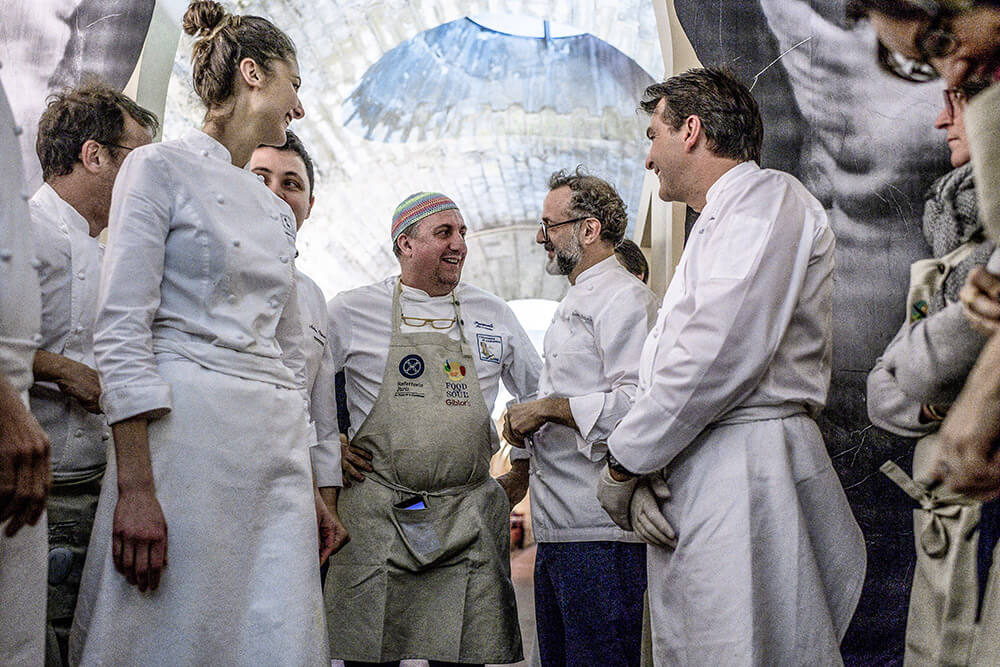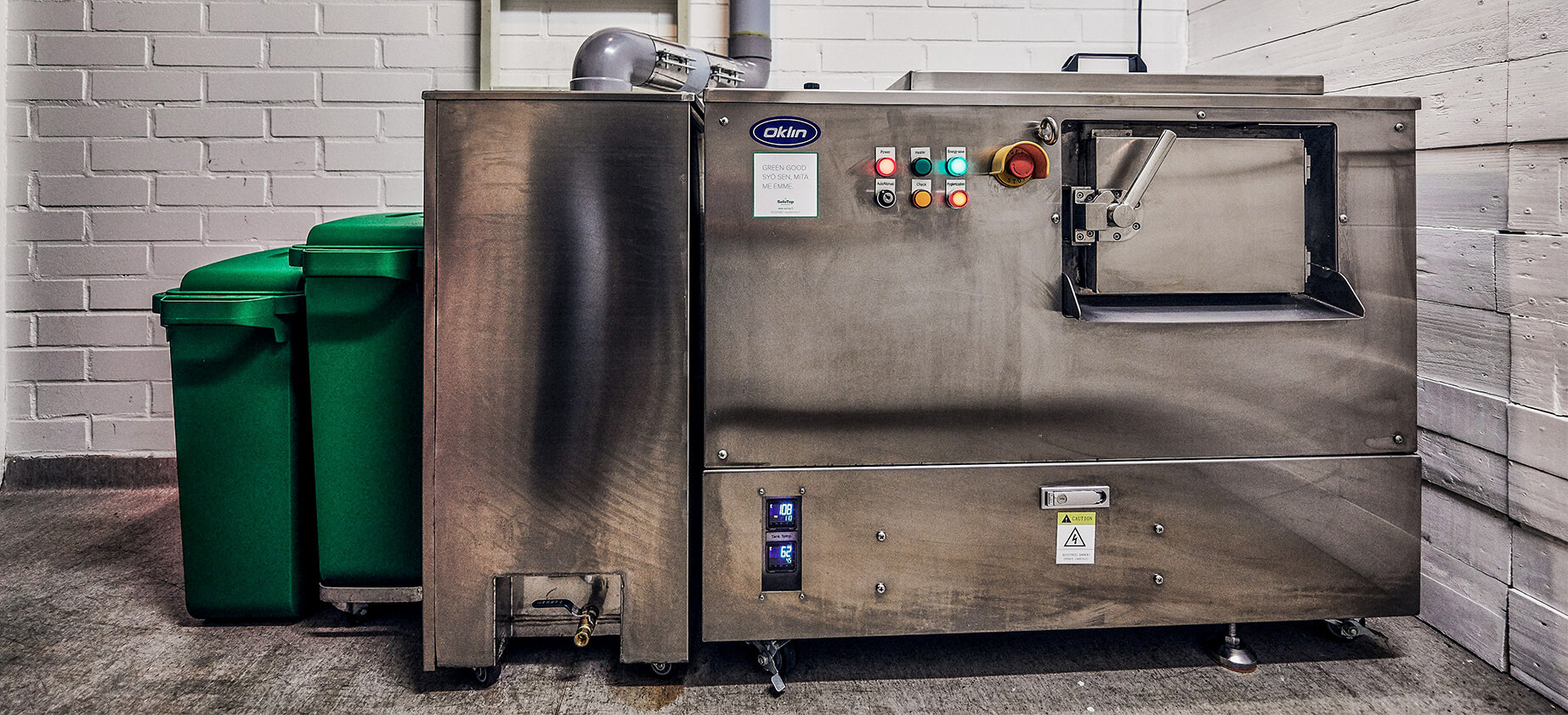Signora Cervigni only starts cooking her universally beloved risi e bisi at the beginning of spring, when fresh peas first become available. “For one, because fresh peas just naturally taste better,” the retired Veneto-area chef says. “And for another, because the pods are still on.” She needs those to add to the broth she cooks the rice in. The pods, the Signora adds, are what give the risotto the perfect aroma.
The traditional method of preparing risi e bisi is a good example of how people approached vegetables in earlier days, when food was still scarce and wasting it was practically inconceivable. Today, in the age of food abundance, many cooks are recalling the virtues of their forefathers – not because there isn’t enough food, but because there’s too much of it. What began a few years ago in the meat department (the “nose-to-tail” movement, using every part of the animal) is now making its way into the vegetable aisle as well.
The “root to stem” trend opens up new and fascinating flavors, benefits health and the environment… and saves money on top of it all. Health benefits? You bet – there’s plenty of vitamins and minerals in fruit and vegetable peels. Some (potatoes and cucumbers, for example) even contain the majority of the nutrients. The greens on roots and tubers such as carrots, radishes, kohlrabi, and beets are all packed with substances like calcium and beta carotene. Any of them can be used to flavor salads, sauces, and soups, or to lend an interesting and unusually aromatic note to pesto, broth, or stock.
“Nowadays, we have the big advantage of technology,” says Italian cookbook author Carlo Catani. “All our grandmothers had was a vegetable press or a sieve. Thanks to modern kitchen appliances, we can process the outer leaves of the cauliflower or the hardest part of the fennel bulb into pastes or creams in just a few minutes.”

Root to stem dish at restaurant Nolla in Helsinki / Image: Nikola Tomevski
Other often-forgotten yet highly delicious parts can be treated like normal vegetables – tender broccoli or artichoke stems, for example, are an absolute delicacy to veggie experts like Signora Cervigni.
“If I don’t use the broccoli stem,” she says, shaking her head, “I lose at least half the vegetable, but I paid full price for it.” As for artichoke stems, many Italians already consider them the best, most tender part of the vegetable right along with the heart.
The trend is a great boon to the environment as well, since wasting less food means needing less water and energy to grow it, and less fuel to transport it. Decomposing vegetable waste also releases methane, a greenhouse gas nearly as dangerous as CO2.
From the bin to the stove
No wonder more and more chefs are taking a greater interest in ways to use vegetable “waste”. Author Carlo Catani collected recipes along these lines in the cookbook he released last year, entitled Tempi di Recupero – which can mean either “times of recovery” or “extra time”. Catani’s goal is to inspire readers to avoid food waste in the kitchen.
“In the 1980s,” he says, “wastage – overloading, leaving out – was still considered a hallmark of fine dining, but now attitudes have changed completely. It started when a lot of top restaurants began using parts of the animal that Italians call ‘the fifth quarter’ – the organs, feet, tails, ears, and so on. Now that trend has expanded to include the vegetables that we’ve been throwing out far too much of for many years.” The recipe collection includes one by Chef Riccardo Agostini of Il Piastrino, a Michelin-starred location near Rimini: a root-vegetable carpaccio with Jerusalem artichoke peels.

Massimo Bottura and team at his charitable anti food waste restaurant Refettorio Paris / Image: shehanhanwellage
Italian superstar chef Massimo Bottura has also been actively interested in food waste ever since the 2015 Expo in Milan. Osteria Francescana, his three-Michelin-starred location in Modena which has been named the world’s best restaurant multiple times, regularly serves creations like tortellini in brodo di tutto, or tortellini in a broth of everything – the “everything” in this case is a variety of vegetable peels and leftovers. Another now-legendary creation of his is pane è oro, or “bread is gold”. The dessert, which is also the title of one of Bottura’s cookbooks, is based on a piece of stale bread.
Swiss author duo Esther Kern and Pascal Haag offer additional ideas in their book, Leaf to Root; highlights include cauliflower-leaf curry with potatoes, cucumber-peel and ginger soda, white cabbage stalks with black walnuts and pearl onions, and spaghetti with a pesto made of radish greens and goat cheese.
A handful of restaurants have made it their mission to avoid food waste to the greatest possible extent – and the idea has proven a big hit. Silo, in Brighton, England, now plans to expand to London; Nolla, in Helsinki, is so successful that the restaurant had to move to a new, larger location after being in business for just ten months. Both places dump their leftovers into their on-site composting machines and then ship the compost to their suppliers, who use it in their gardens.
Dumpsters are so last season
“Actually, we only compost what’s left on people’s plates or things that really can’t be eaten, such as eggshells,” explains Albert Franch Sunyer, chef and co-owner of Nolla. With everything else, he says, they’re mindful about how they prepare the food, so that there’s nothing left for the composter. “I’ve worked in a lot of top restaurants all over the world,” the Spaniard continues, “and once you’ve seen, as I have, how much food gets wasted and thrown out, you can’t help but feel bad about your work. Today, it really gives me a boost to discover all the fantastic dishes you can prepare using ingredients that the kitchens I used to work in would have just thrown out.” For example, he says, roasted and dried onion, celery root, and potato peels make delicious broths, stocks, and essences; fermented carrot peels, meanwhile, can be dried and powdered to lend color and flavor to a dish.
“In reality,” Sunyer says, “we don’t even like using the term waste. We prefer ‘byproducts’, because most of them are edible – and are eaten in many cultures. Our goal is to make use of them, to introduce our customers to them, to make them more accessible. That also shows respect for the farmers who put so much time and energy into planting, cultivating, and harvesting the vegetables. Not to mention that it’s respectful toward nature.” After all, he finishes, nature simply doesn’t produce trash.
















